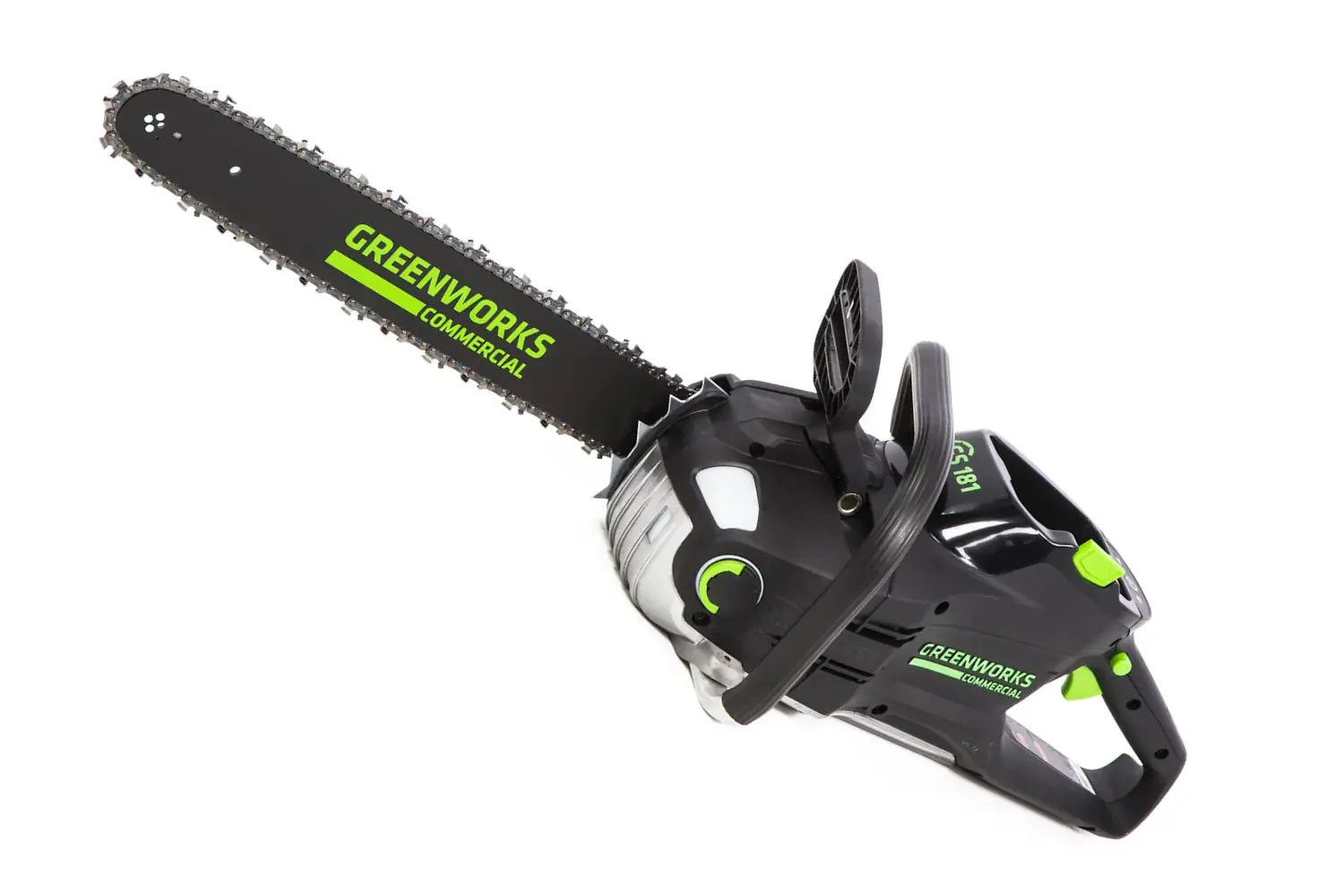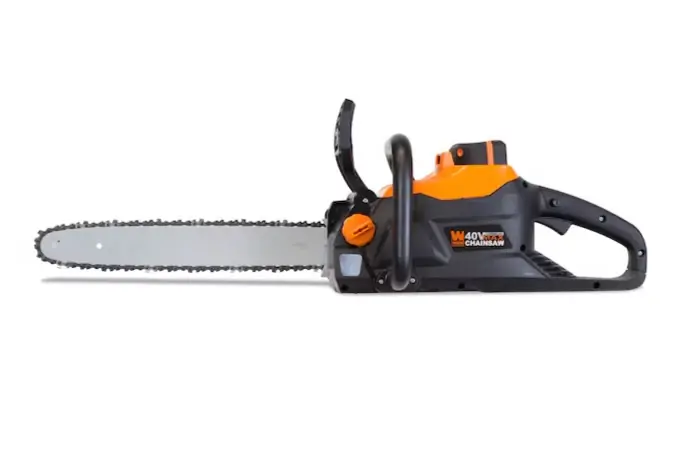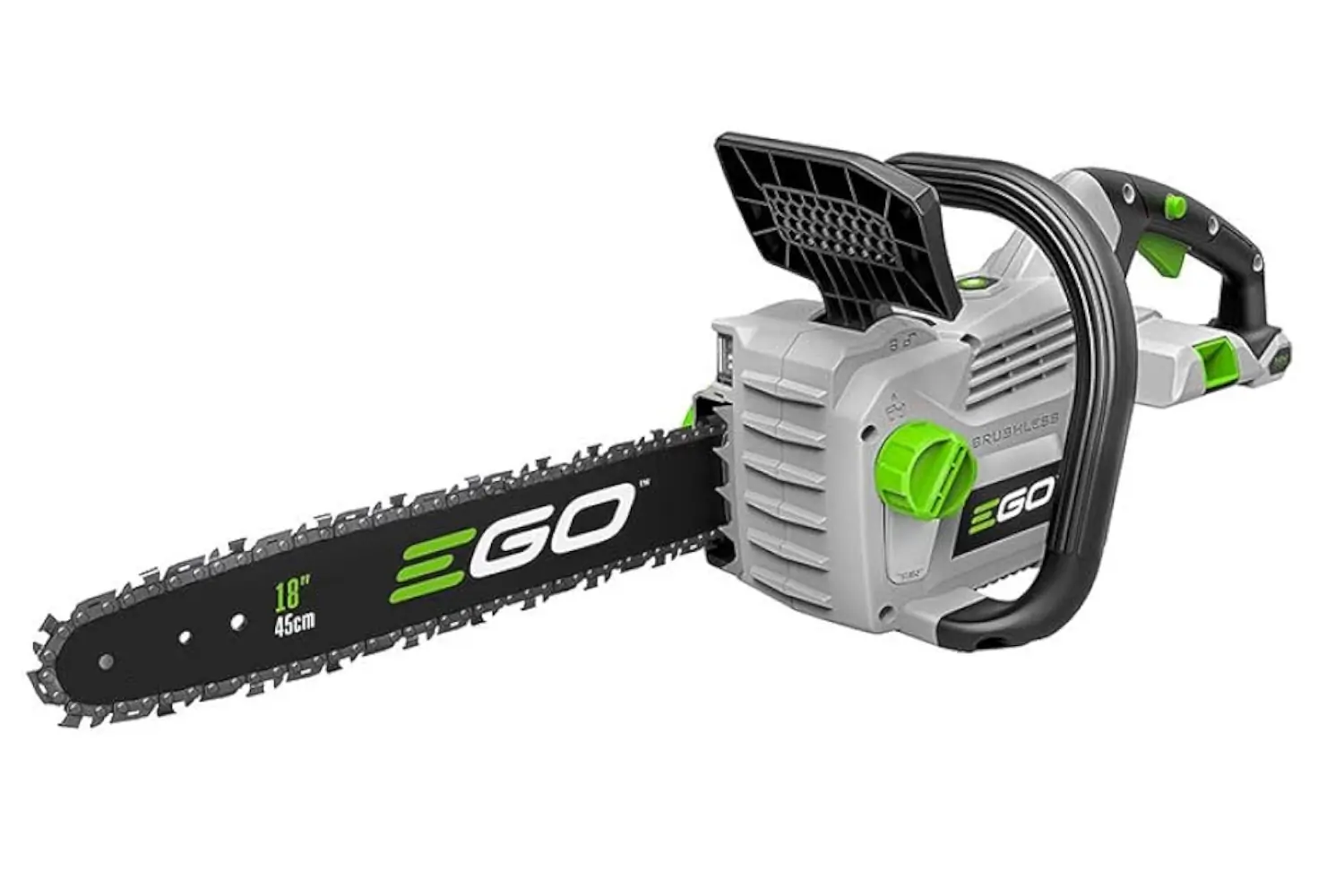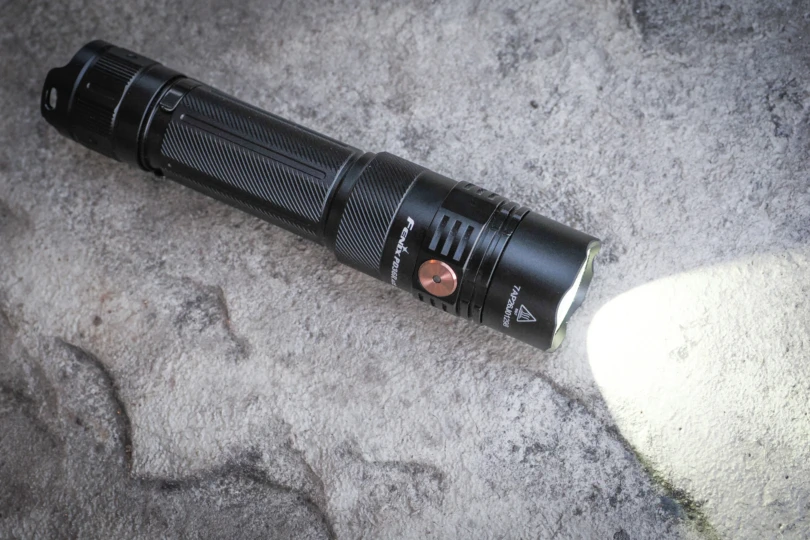Electric chainsaws are better than gas chainsaws. That may feel like a controversial statement, but cordless electric saws eliminate most of the issues that make gas saws a pain.
Among the many benefits, they seriously reduce emissions by using electricity instead of oil and gas. By eliminating gas motors, they’re cheaper to run — most don’t need maintenance beyond an occasional chain sharpening. Some saws are also so quiet that not only will they be less disturbing to your neighbors and wildlife, but there’s also less of a chance they’ll impact your hearing.
Our team at GearJunkie has collectively tested dozens of these electric beasts and left no stone unturned in finding the best saws for this guide. Whether bucking logs in the yard or cutting trees while building trails, lead tester and author Berne Broudy has years of experience with both electric and gas-powered chainsaws and harnessed this wisdom and the collective knowledge of our team to bring you the streamlined selection of eight electric chainsaws you see today.
Read on to find out more about the electric chainsaws we recommend. Or, head down the page to learn more about electric chainsaws in our detailed buying advice.
Editor’s Note: We updated this guide on November 24, 2024, with the addition of a Price & Value section to explain cost-related considerations.
The Best Electric Chainsaws of 2025
Greenworks GS181 82V 18″ Chainsaw
- Weight (with battery): 17 lbs., 4 oz.
- Bar length: 18”
- Bucking spikes: Steel
- Chain brake: Yes
- Chain tensioning: Via included but no onboard tool
- Warranty: 2 years
Pros
- As powerful as a gas saw
- Long-lasting battery
- Quick charging
Cons
- Batteries and chargers sold separately
- No onboard chain-tightening tool
- Manual chain tightening
WEN 40417 40V Max Lithium Ion 16-Inch Brushless Chainsaw
- Weight (with battery): 12 lbs.
- Bar length: 16"
- Bucking spikes: N/A
- Chain brake: Yes
- Chain tensioning: Tool-free
- Warranty: 2 years
Pros
- Budget-pricing
- Proven Oregon 16" bar
- 40V battery provides decent torque and run-time
Cons
- Cheaper plastic construction isn’t as durable
- Stock chain isn’t a high-quality option
DeWalt XR 12″ 20V Battery Chainsaw Kit
- Weight: 9 lbs., 5 oz.
- Bar length: 12″
- Bucking spikes: Plastic ridges
- Chain brake: Yes
- Chain tensioning: Tool-free
- Warranty: N/A
Pros
- Compact
- Lightweight
- Affordable
Cons
- Not great for bigger jobs
- Takes longer to cut than other models
Stihl MSA 220 C-B
- Weight: 12 lbs., 9 oz.
- Bar length: 14″ and 16″
- Bucking spikes: Plastic and metal
- Chain brake: Yes
- Chain tensioning: Tool-free
- Warranty: 3 years
Pros
- Tool-free chain tensioning
- Rugged and durable
Cons
- Louder than other saws of similar size
Hart 8” Pruning Saw
- Weight: 6 lbs., 8 oz.
- Bar length: 8″
- Bucking spikes: No
- Chain brake: No
- Chain tensioning: Onboard tool
- Warranty: 3 years, limited
Pros
- No oil required
- Small and lightweight for light jobs around the house
Cons
- Not great for big jobs
- No chain brake
Greenworks 10″ Brushless Pole Saw
- Weight: 12 lbs., 12.8 oz.
- Bar length: 10”
- Bucking spikes: No
- Chain brake: No
- Chain tensioning: Tool-free
- Warranty: 4 years
Pros
- Perfect for high branches
- Low weight
Cons
- Niche design limits use
Ryobi 40V HP 18” Brushless Chainsaw
- Weight: 13 lbs.
- Bar length: 18”
- Bucking spikes: Plastic
- Chain brake: Yes
- Chain tensioning: Via onboard tool
- Warranty: 5 years
Pros
- Comes with carrying case
- Killer price for a powerful saw
Cons
- Plastic spikes instead of metal
- Vulnerable battery position under saw
- Weight: 9 lbs.
- Bar length: 16”
- Bucking spikes: Plastic
- Chain brake: Yes
- Chain tensioning: Tool-free
- Warranty: 5 years
Pros
- Solid performance at a good price
- Simple chain tension adjustment
- Quick charging battery
Cons
- Plastic bucking spikes are small and not very effective
- Slow wind-up time
Electric Chainsaws Comparison Chart
| Electric Chainsaw | Price | Weight w/ Battery | Bar Length | Bucking spikes | Chain brake | Warranty |
|---|---|---|---|---|---|---|
| Greenworks GS181 82V 18″ Chainsaw | $520 | 17 lbs., 4 oz. | 18″ | Steel | Yes | 2 years |
| WEN 40417 40V Max 16-Inch Brushless Chainsaw | $179 | 12 lbs. | 16″ | N/A | Yes | 2 years |
| DeWalt XR 12″ 20V Battery Chainsaw Kit | $279 | 9 lbs., 5 oz. | 12″ | Plastic ridges | Yes | N/A |
| Stihl MSA 220 C-B | $420 | 12 lbs., 9 oz. | 14″ and 16″ | Plastic and metal | Yes | 3 years |
| Hart 8” Pruning Saw | $145 | 6 lbs., 8 oz. | 8″ | No | No | 3 years |
| Greenworks 10″ Brushless Pole Saw | $179 | 12 lbs., 12.8 oz. | 10″ | No | No | 4 years |
| Ryobi 40V HP 18” Brushless Chainsaw | $369 | 13 lbs. | 18″ | Plastic | Yes | 5 years |
| Ego Power+ CS1800 | $330 | 9 lbs. | 16″ | Plastic | Yes | 5 years |

How We Tested the Best Electric Chainsaws
From bucking logs at a job site to amassing wood for the winter on homesteads, the GearJunkie team is no stranger to the chainsaw game. Our lead tester, Berne Broudy, has spent many a day covered in sawdust and cultivated our initial selection of six chainsaws back in March of 2021. Since then, we’ve had our finger on the pulse of the electric chainsaw market and make sure to scope out new technologies and updates as soon as they’re available.
We chopped up endless lengths of logs, cleared miles of trails, and amassed piles of firewood with each of these models, using them on rigorous jobs to truly test their mettle. We focused on the ease of use, battery power, efficiency, and durability of each saw — and each had to impress us on multiple fronts to earn any real estate in this guide.
We know the competition for the chainsaw podium is fierce, which is why we keep this guide on an iterative update schedule, ensuring the roundup you see above is the most current, deserving selection possible. Rest assured — each saw on this list will tackle your sawing tasks with ease.
Buying Guide: How to Choose an Electric Chainsaw
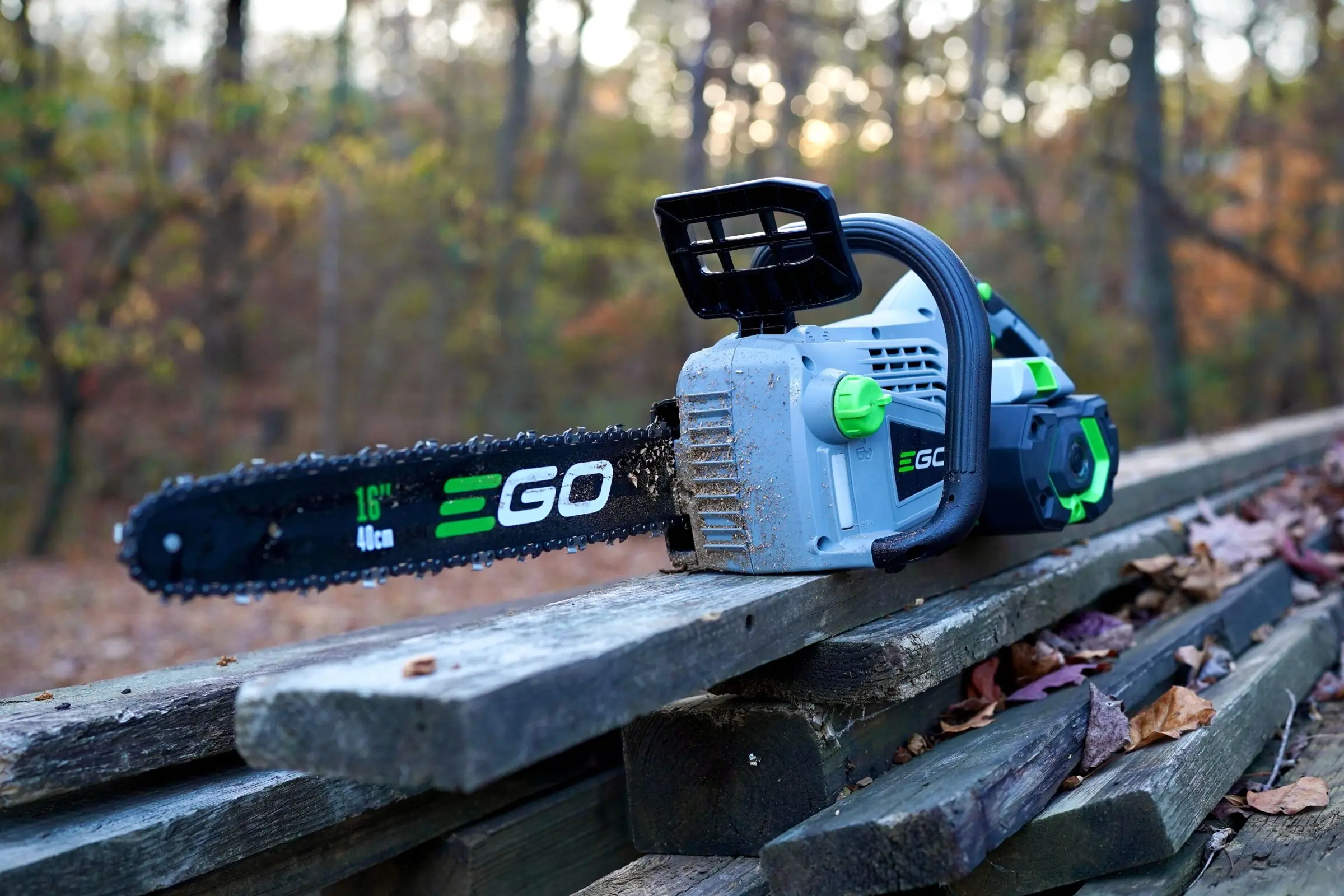
What Is the Point of an Electric Chainsaw?
There’s a feeling of power in yanking a gas-powered saw to life and hearing it rumble in your hands. Take away that allure — and remove some power — and you might be wondering what the point of an electric chainsaw would be. They don’t sound as cool, they have less tenacity, and you have to remember to keep their batteries charged.
So why buy one? Below, we’ll take a look at some of the primary pros and cons of these e-beasts, and you can decide for yourself.
Pros of Electric Chainsaws
To us, these saws’ discrete draw lies in their simplicity, weight, safety, eco-friendly nature, and financial savings. Electric chainsaws hum to life at the flick of a switch, whereas gas saws require you to pull a cord a few times to start it up — which bears the inherent danger of kickback occurring and injuring the operator. Even with electric saws, we always wear PPE, including heavy-duty work pants and work boots, along with eye and ear protection.
Gas saws also run on a blend of gas and oil, and insufficient blends can keep the motor from turning over — and require regular maintenance. Having carburetors, fuel lines, spark plugs, and air filters in the system adds a significant number of potential failure points. Additional gas and oil are also continued financial burdens.
Gas-powered models are heavier to operate and more unwieldy, which also places them on the more dangerous fringe of the spectrum. Finally, gas chainsaws transmit fumes that are toxic to the environment, and require a continual influx of fossil fuels to run. Electric chainsaws are better for the planet and are generally easier to operate.
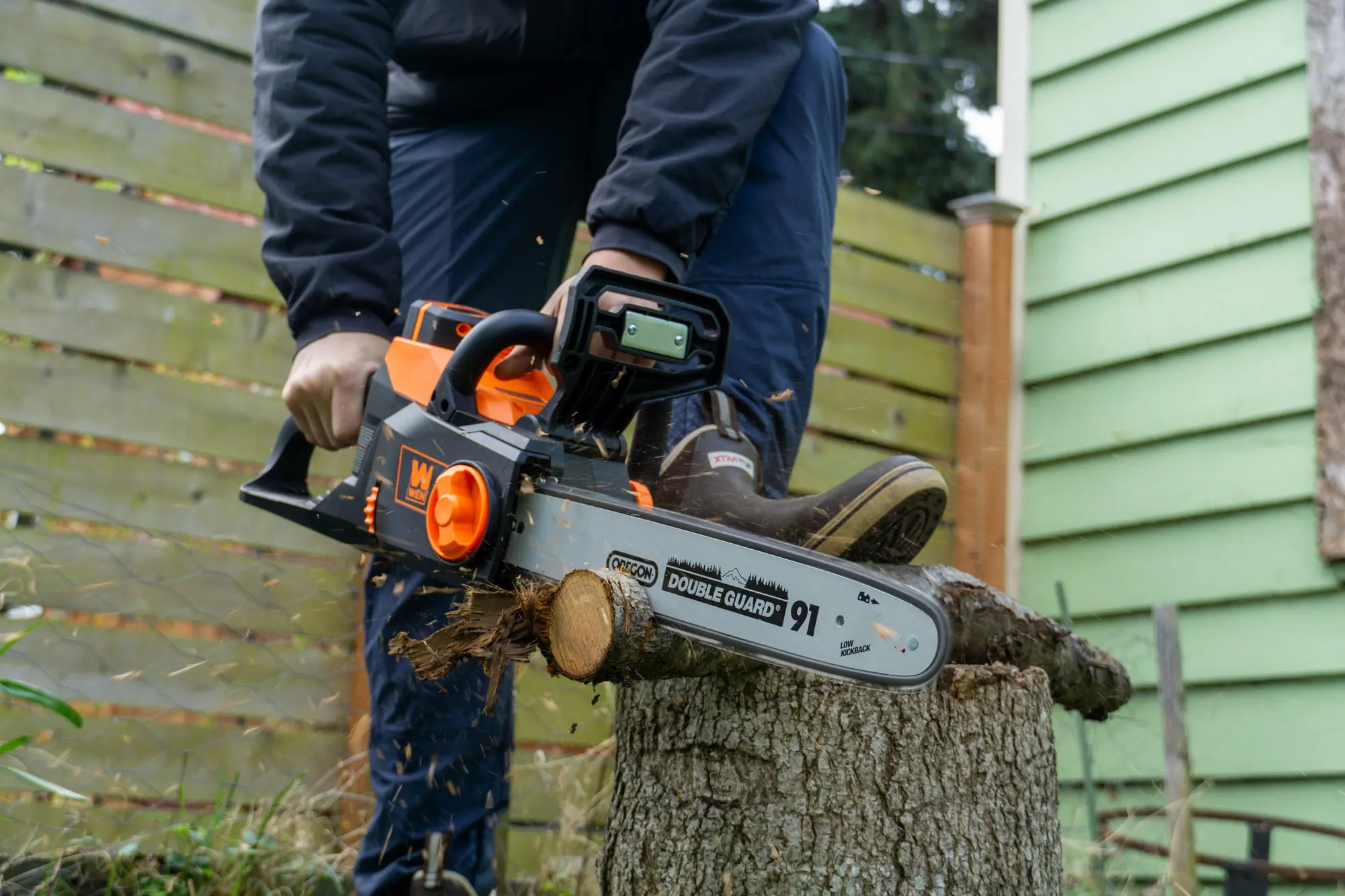



Cons of Electric Chainsaws
The primary con of electric chainsaws lies in their lack of power compared to their gas-infused cousins. While they hold their own considering their weight and simplicity, they won’t be able to handle the caliber of tasks that a gas-powered saw of the same size could. Additionally, it is more difficult to accomplish remote jobs with electric chainsaws, as you need to be close to a power source to keep your batteries charged, and bringing loads of extra batteries gets heavy, expensive, and downright frustrating.
As you can see, it boils down to personal preference and the types of jobs you plan on tackling when it comes to choosing between an electric or gas-powered chainsaw. Both have their own advantages and drawbacks, but we tend to gravitate to electric saws for moderate work that has access to an outlet. The pros seem to outweigh the cons for us in most everyday DIY tasks we encounter.


What Other Battery-Powered Tools Do You Already Own?
The key to battery-powered tools is that many of the batteries can be used in a family of tools, not just a single tool. This can save you some major money.
If you’re already committed to a brand’s battery system, it may make sense to buy a compatible chainsaw. If you haven’t committed to a brand’s battery system, choose carefully, because you may be committing to more than just the chainsaw once you get started. The batteries in our Greenworks chainsaw also power our lawnmower, leaf blower, pole saw, and more.
Choose Your Batteries and Charger Wisely
Electric chainsaws run on quick-charging lithium-ion batteries. Many recharge in about an hour. A bigger battery will give your saw longer life. It will also weigh more. If you’re doing light yard work and using your saw infrequently, it may make sense to have multiple smaller batteries instead of big ones.
Actually, it always makes sense to have multiple batteries, because there’s nothing more frustrating than being halfway through a project and having to wait until your battery recharges, which could be 40 minutes to several hours. Some e-chainsaws have battery-charging options. If a quick recharge is important to you, spend a few extra bucks to save yourself hours of waiting.


What Do Ah and V Numbers Mean?
When shopping for a battery-operated chainsaw, amps (A), amp-hours (Ah), and voltage (V) tell you how much work you’ll be able to do with the saw-and-battery combination.
Amps or amperage is the amount of electrical current the battery can provide. Amp-hours tells you how long the battery can provide a certain amount of current. And voltage is how much force the saw has to push current from one part of the electrical circuit to the next. More expensive saws will have higher numbers.
Weigh Your Options


Smaller saws are lighter and easier to operate. Pick one large enough to get your jobs done. If you’re planning on carrying a saw for trail work, you may want the smallest, not the most powerful. If you’re using your saw to fell trees and buck up firewood for the season, power and large size are key.
Battery choice also affects the saw’s running weight. Choose batteries with enough juice you won’t be waiting for a recharge. Keep in mind that lighter batteries are usually shorter-lived but also make a saw easier to manage.
What Features Matter?
Not every saw has a chain brake, and not every saw is self-oiling. Some come standard with bucking spikes, while others leave them off. Pick a saw with the operation and safety features that are important to you. Some e-chainsaws have tool-free chain tensioning, while some have clip-in storage for a tool, etc.
Bucking Spikes — What Are They and Do You Need Them?


Bucking spikes — known by other monikers such as teeth, spikes, dawgs, or dogs — are metal or plastic plates that can be fixed to the powerhead of a chainsaw. Most chainsaws come with bucking spikes already pre-mounted, but some have mounting areas where different types of spikes can be mounted directly to the saw.
“Dawgs,” as we like to call them, provide something of a pivot point when bucking up large sections of logs, as they allow you to dig the spike into the log and use them as a point of leverage to force your bar through the log. This is extremely important when using particularly large chainsaws with long bars to cut through oversized logs.
To properly use a chainsaw dawg, use the rotation of your chain to help you jam the spikes into the log when you begin your cut. This allows you to use the sticking point to pivot your chainsaw bar down into the log. After you have cut through a significant portion of the log, you can pull the dawgs out of the log and continue cutting as normal. If it is a particularly large log, you can continue jamming the spikes back into the log for multiple pivot cuts.
We have noted if each of the electric chainsaws above has bucking spikes or not in the specs chart.
You Get What You Pay For


Electric chainsaws are like most other tools: You get what you pay for. If you buy a cheap saw, expect that it won’t have all the bells and whistles of a more expensive saw, and the battery likely won’t be as powerful or long-lasting.
Not everyone needs a pro-grade saw, but for us, features like a chain brake and automatic chain oiler are non-negotiable. Chainsawing safety is paramount, and an auto-oiler will keep your saw in tip-top shape.
Caring for Electric Chainsaws
“Take care of your tools, and they’ll take care of you” — a maxim we’ve probably all heard our dads mutter in the past. While electric chainsaws are much easier to maintain, clean, and operate than gas-powered models, there are still some important considerations to keep in mind before you leave the job site at the end of a long day.
First and foremost, it is vital to ensure your oil tank is filled with quality bar and chain lubricant before each use. Operating any electric chainsaw without chain oil or when the oil level is below the minimum mark will result in long-term damage to the saw. We’ve been using a premium oil-free lubricant from EGO Power+ and have had solid results with it.
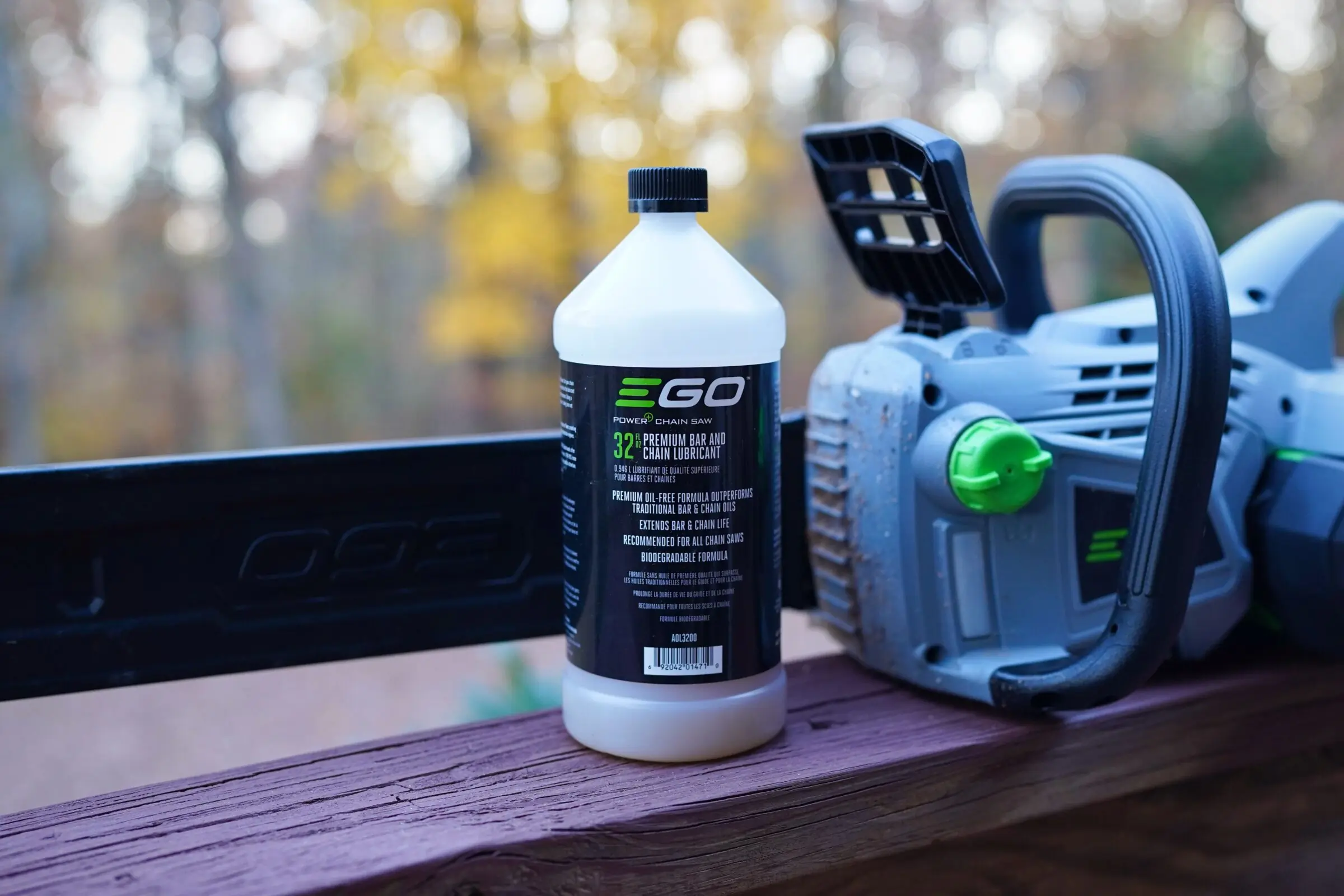



After each use, it’s a good idea to clean debris like dirt and wood chips from the chain and guide bar with a soft brush. You should also wipe the saw surface with a clean, damp cloth soaked in a mild soap solution or mechanic’s wipes. Make sure you have removed the battery before cleaning your saw.
After you have done this, remove the side cover, and use your soft brush, paper towels, or even an old toothbrush to clear debris from the guide bar, saw chain, and sprocket under the cover. Sawdust and gunk build up fast in here, so it’s important to stay on top of this! If the buildup is difficult to remove, add a bit of carb cleaner to your toothbrush or cloth to help break it up.
Next, make sure that the body of your saw is clear of sawdust and dirt, such as your battery compartment and connections, and vent areas. Over time you will need to sharpen or replace your chain and perform heavier maintenance tasks, but keeping it clean after each use will greatly prolong the life of your saw.
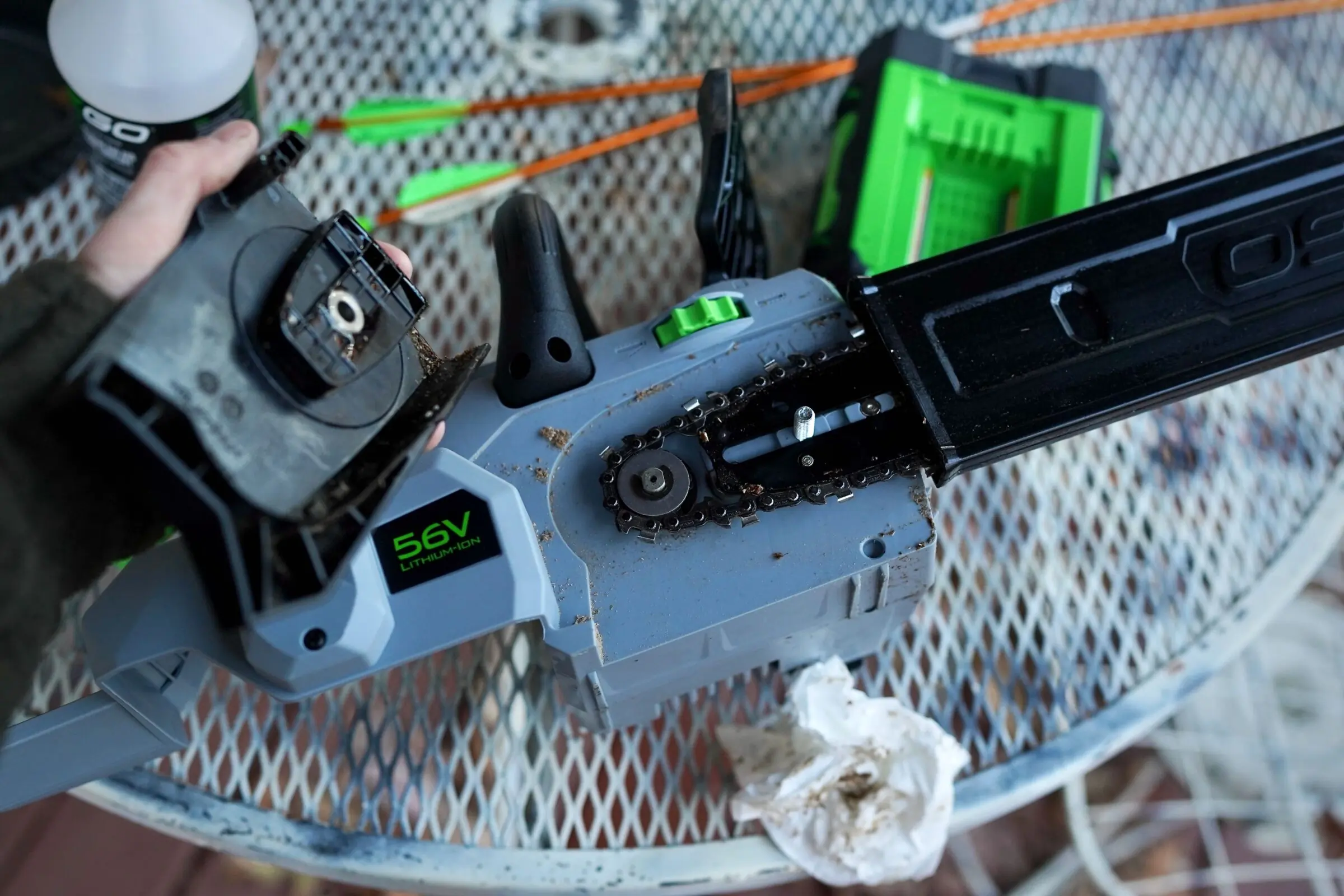



Safety Considerations When Using Electric Chainsaws
Just because these are electric chainsaws, doesn’t mean they are any less dangerous than their gas-guzzling counterparts. Chainsaw work is, by definition, extremely risky, and even lightweight 10″ “yard-work” saws could lop your finger off as easily as they trim the bushes. Electric chainsaws are sometimes also considered even more dangerous than gas-powered saws, as there is no rumble of the motor to remind you that the saw is operational.
It’s important to read the instructions and owner’s manual completely for any electric chainsaw you decide to go with and remove the battery before checking and adjusting chain tension or refilling bar oil. Make sure to learn how to safely use a chainsaw from someone you trust who has experience in the craft before setting off on your own. Additionally, stock up on all of the appropriate safety gear before working with these tools. They have the potential to seriously injure you, but there are steps you can take — and apparel you can wear — to mitigate the risk.


Price & Value
There is a fairly wide range in price for electric chainsaws, and we’ve found that there’s a pretty direct correlation between cost, quality, and performance. How much you should spend really comes down to how much you’re going to use it and the cutting projects you intend to undertake with it.
Budget
At the lower end of the price spectrum, we mostly find pruning saws or models from less established brands. These types of saws work well for light-duty tasks like pruning or cutting smaller-diameter logs and limbs around the yard or out on the trail. Saws like this tend to be a bit less powerful, and the construction also feels a bit less robust than saws that cost more.
The Hart 8” Pruning Saw ($145) is the least expensive model we tested. This isn’t too surprising, given its short 8-inch bar and relatively simple design. This is a light-duty saw for pruning, small jobs around the house, and less frequent use, and in that context, it works well.
Moving just a bit higher in price, we find the WEN 40417 40V Max 16-Inch Brushless Chainsaw ($179). With a longer 16-inch bar and a bit more power, this saw is capable of cutting larger wood than a pruning saw, but it’s still best for light to medium-duty cutting tasks. That said, it doesn’t hold a candle to the bigger names, nor does it have the same ecosystem of tools to choose from. But, if you need a saw for occasional use around the house, the WEN is up to the task without emptying your wallet.
Mid-Tier
Moving up a price tier, moderately priced electric chainsaws come from some of the more reputable and established e-power tool brands like DeWalt and EGO. Here we find varying sizes of saws with different intended uses, but the builds are generally higher quality, with better features and more developed tool ecosystems to buy into.
The DeWalt XR 12″ 20V Battery Chainsaw Kit ($279) is our pick as the best value. DeWalt is well-known for its quality tools of all kinds, and the XR 12″ is no different. With a 12-inch bar, it’s easy to handle, making it great for projects around the house. Plus, it’s lightweight and easy to carry into the woods for trail work. We appreciate the tool-free chain tensioner, self-oiling, and chain brake features. We also like that the batteries are cross-compatible with all of DeWalt’s 20V tools.
Similarly, the EGO Power+ CS1800 ($330) is a solid option for a moderate price. With good power, a long battery life, and a 16-inch bar, this is still a homeowner-oriented saw, but it’s a bit more capable of cutting larger wood. It’s light enough to be easy to carry and handle yet powerful enough to saw through moderate-size logs with a battery that lasts longer between charges. It’s also super quiet, and the battery can be used with EGO’s other tools, like leaf blowers and string trimmers.
Premium
As we get into the high end of the electric chainsaw market, we find heavy-duty saws that can perform alongside their gas-powered counterparts. These saws have rugged constructions, more powerful motors and batteries, and features like metal bucking spikes. You’ll spend over $400, but you’ll get an electric chainsaw that’s truly capable of felling large trees and bucking lots of rounds. If you drop trees regularly or heat your home with wood, then a higher-end saw will likely serve you better.
The most expensive saw we tested is the Greenworks GS181 82V 18″ Chainsaw ($520), which is a commercial-grade tool that can handle some serious cutting tasks. Dropping and bucking mature hardwoods is no problem with its 18-inch bar, powerful motor, and long-lasting battery. You’ll pay more for it, but this saw’s performance, features, and durability make it a worthwhile investment for serious chainsaw users.
Stihl is a well-known brand in chainsaws, and its Stihl MSA 220 C-B ($420) lives up to this reputation as our favorite mid-size electric chainsaw. From the rugged build to the high-quality chain, this saw reinforces the idea that spending more for a quality product the first time is worth it in the long term.
Frequently Asked Questions
Part of the allure of electric chainsaws is how easy they are to operate. Generally speaking, they are much more straightforward than gas-powered saws and require you to simply charge up the battery and fire it up with the flick of a switch. Make sure to fill the saw with bar oil before operating it — but aside from that, no additional fluids are needed.
Each saw is slightly different in its own regard, so be sure to thumb through the owner’s manual before ripping into branches to make sure you understand how it works, and how to stay safe while using it.
We cover a handful of the pros and cons of electric chainsaws in our buyer’s guide above, but it truly does boil down to personal preference and the task at hand. Some remote jobs would be better served by a more powerful gas chainsaw, as they don’t require you to be close to an outlet or carry loads of extra batteries. However, gas-powered saws can be more expensive and maintenance-intensive over the long run, and aren’t quite as eco-friendly.
Electric chainsaws are easy to use, better for the environment, quieter, safer, and more affordable over time. For us, electric chainsaws make the most sense for the majority of light to moderately demanding jobs we encounter day to day.
We have highlighted a number of different categories of saws in this guide, and one might better suit your needs over another. As an all-around workhorse capable of tackling a diverse array of jobs, we narrowed in on the Greenworks GS181 82V 18″ Chainsaw for our best overall award.
This may not be the best saw for you personally, however, and something like Hart’s 8” Pruning Saw or Greenworks’ 10″ Brushless Pole Saw could be perfect if you just need light tasks done around the house, as opposed to big ol’ bucking jobs in the backcountry.
Consider the full scope of objectives you want to accomplish before dialing in on the electric chainsaw you end up buying.
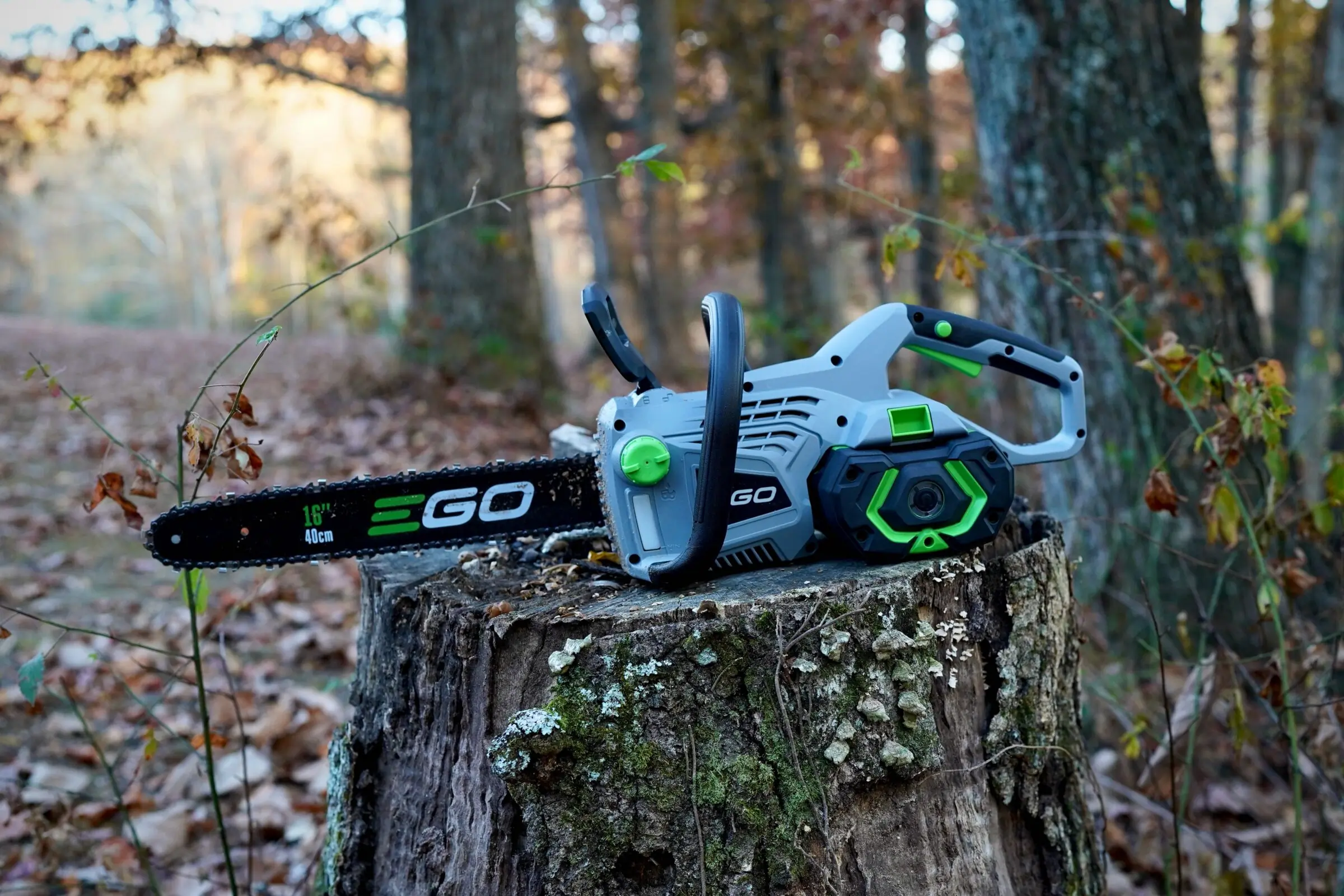



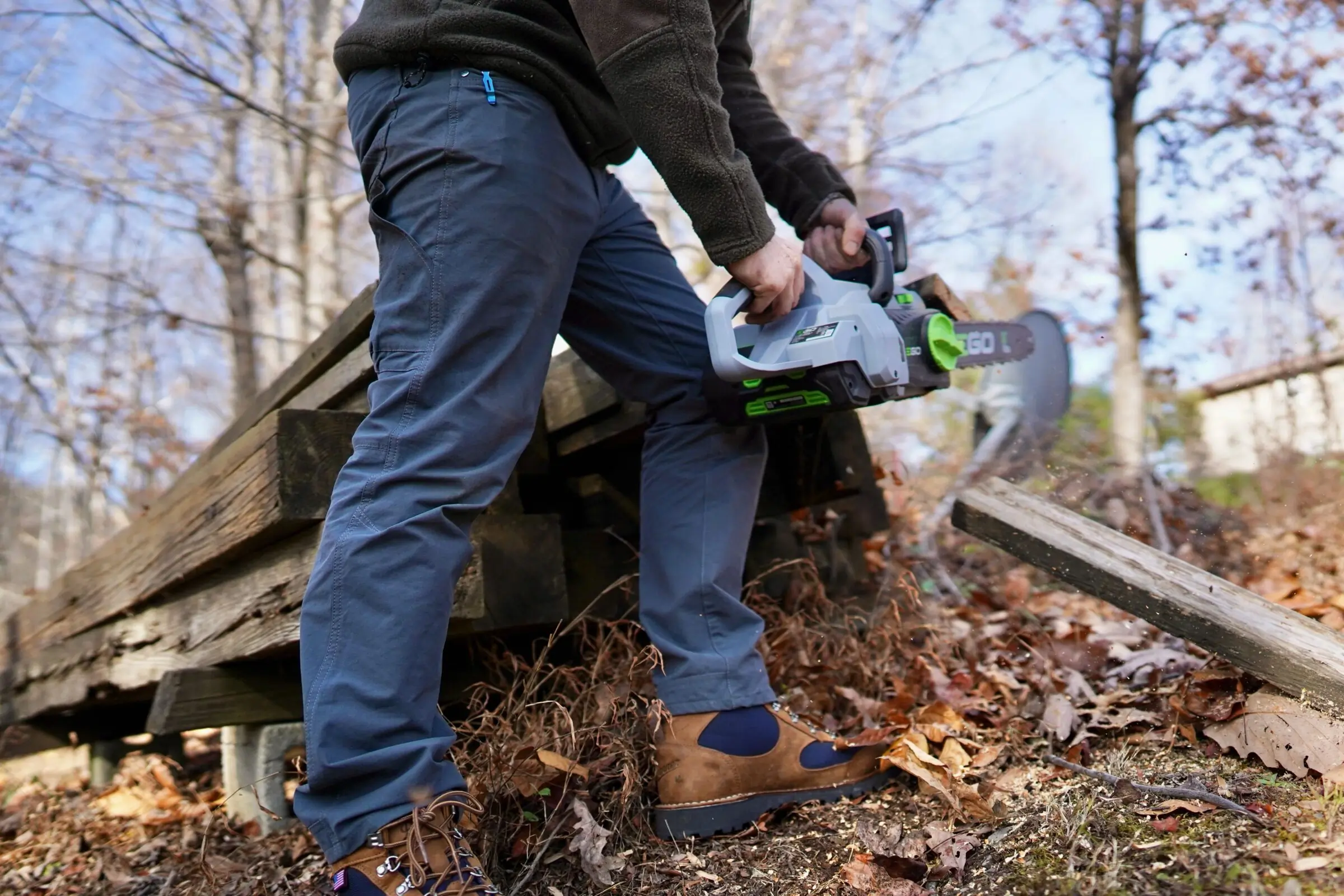

The Best Work Pants of 2025
Work pants provide functional utility for carpentry, construction, ranch work, or DIY home projects. These are the best work pants we have found in 2025.


The Best Work Boots of 2025
Protect your feet with one of our picks for the best work boots, including boots from Caterpillar, Danner, and more!

